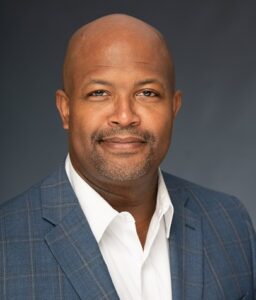by Leon T. Andrews, Jr., President and CEO, Equal Measure
 I started playing the violin at five years old, became concert master of the DC Youth Orchestra when I was in high school, and performed solos at the John F. Kennedy Center for the Performing Arts in Washington DC as a college student at Howard University. Playing the violin has always brought me joy. My time in the DC Youth Orchestra had a profound impact in my life—bringing opportunities for friendship, leadership, and mentorship. As I reflect on those years, I am amazed at the professionalism, musicality, emotion, and power that came out of young people who were willing to come together and make beautiful music. I would find a rich source of energy in the tones that flowed as I participated in an experience that has forever affected my understanding of how to make beautiful music (figuratively and literally) together. In fact, music has always been central to my life, a gift from my parents and grandparents, and a legacy that I am hoping will continue with my three daughters.
I started playing the violin at five years old, became concert master of the DC Youth Orchestra when I was in high school, and performed solos at the John F. Kennedy Center for the Performing Arts in Washington DC as a college student at Howard University. Playing the violin has always brought me joy. My time in the DC Youth Orchestra had a profound impact in my life—bringing opportunities for friendship, leadership, and mentorship. As I reflect on those years, I am amazed at the professionalism, musicality, emotion, and power that came out of young people who were willing to come together and make beautiful music. I would find a rich source of energy in the tones that flowed as I participated in an experience that has forever affected my understanding of how to make beautiful music (figuratively and literally) together. In fact, music has always been central to my life, a gift from my parents and grandparents, and a legacy that I am hoping will continue with my three daughters.
My Equal Measure family has become aware of my love of music, and as I learn their varied musical passions, we collectively embrace this muse and infuse our meetings with sounds representing all types of musical genres.
Along with gracing our meetings at EqM, music is very much on my mind for another reason. This year Equal Measure will embark on two critical and interrelated initiatives that will set the direction of our organization for the coming years: the development of a new strategic plan and a deepened commitment to racial equity that touches all aspects of the organization. As I think about these initiatives—along with others planned in the areas of professional development, thought leadership, and organizational infrastructure—my mind conjures up the image of a musical score, in which the integration of different tones, notes, rhythms, and harmonies fuse into a cohesive symphony. I’d like to share two segments of that score with you.
In preparation for our strategic planning process, which we will begin in March, our team has already done some significant thinking about what type of organization we want to become—building on the many years of success and impact Equal Measure has achieved. We are weighing questions such as how do we amplify our experience in and knowledge of the nexus of systems thinking, systems change, and collective impact? How do we center that knowledge more clearly within a racial equity framework? How might we double down on our expertise in areas such as youth economic opportunity, cradle-to-career education, workforce development and economic mobility, and community and public health, and potentially identify new areas of focus? Are there new audiences and types of projects that we should pursue (akin to our new projects with the City of Philadelphia’s Anti-Violence Community Grant program and PolicyLink)? And what opportunities exist to build our current services, or even identify new ones that meet sector needs? As my colleagues and I contemplate these questions, we see them not as separate strains, but as elements of a harmonic theme.
Inextricably linked with that theme is our commitment to strengthen our focus on racial equity and intersectionality. Equal Measure has a long history of exploring—and implementing—practices and policies that center diversity, equity, and inclusion within our organization and in our relationships with clients and partners. And over the past year, we have undertaken a series of activities to center racial equity in our work. These activities include facilitating a Learning Circle for our team to engage with equitable evaluation principles and incorporating those concepts into our work; creating White Anti-Racist and BIPOC affinity groups, as well as a book club for our staff to explore issues of race in more depth; and conducting four sessions for our staff to deepen how we normalize conversations about race and intersectionality. This year, we will build on this theme in a gradual crescendo—collaborating with a team of partners to strengthen how we operationalize racial equity and integrate that learning into our emerging organizational strategic plan.
So permit me to share one more musical analogy: rather than compose a symphonic score that requires a passive audience that can only respond when the tune is complete, I view our composition this year as one abounding in audience participation. As we clarify how to transform the strategic direction of Equal Measure, and continue forth on our racial equity journey, we invite your thoughts on how we are doing, as well as your insights on how we can draw on our expertise to bring more value to our clients, partners, and the fields in which we work.
We are excited about the possibilities of this collective thinking—the impact of which will bring music to my ears!